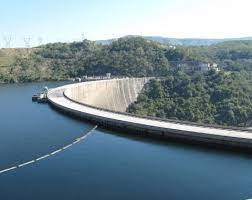– flows of water recorded at Vic Falls Gauging Station increases from 1.192 cubic meters per second same date last year, to 1600 cubic meters per second on February 16 this year.
– a recovery from 489 cubic meters per second on 1st January 2023 to 1538 cubic meters on 16th February 2023, was recorded at Chavuma Gauging Station.
John Cassim

HARARE – Hydro-electricity generation on Lake Kariba by both the Zimbabwe Power Company (ZPC) and ZESCO Limited in Zambia, remains subdued regardless of a slight Lake water level increase, recorded on Thursday 16th February.
The water level at Lake Kariba has slightly gone up to 1.35 meters above the minimum operating level, from 1.24 meters recorded on 1st January, this year.
According to a statement issued on Thursday 16th February, by the Zambezi River Authority (ZRA), the year 2023 started with a recession.
“The year 2023 commenced with a low level of 475.61 meters or 0.83% of live storage available for power generation on 1st January 2023. This was an increase from the lowest record of 475.60 meters (10 cm above the Minimum Operating Level) recorded on 30th December 2022,” Engineer Munyaradzi Munodawafa, ZRA Chief Executive Officer said.
“Whereas the Kariba Catchment has generally received the predicted rainfall amounts, it is noteworthy that a significant increase in the Kariba Dam water level will only start being recorded between April to June 2023,” Munodawafa added.
June is normally the period during which the waters from the Barotse Floodplains greatly influence water levels at Lake Kariba.
“Despite the reasonably good rainy season and in light of the expected peak Lake inflows that will only be realised during the April to June period, water allocation to the two power utilities will not be increased in the short term,” the ZRA boss revealed.Meanwhile both power utilities adhered to a stress call by ZRA end of last year and started producing an average of 250MW respectively in December but that has since been reviewed upwards to an average of 350MW
